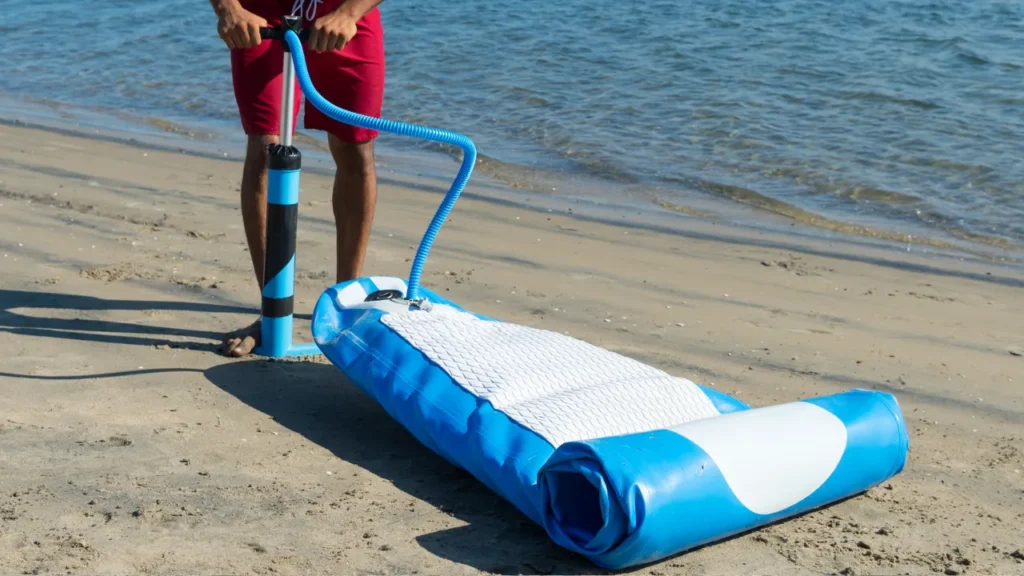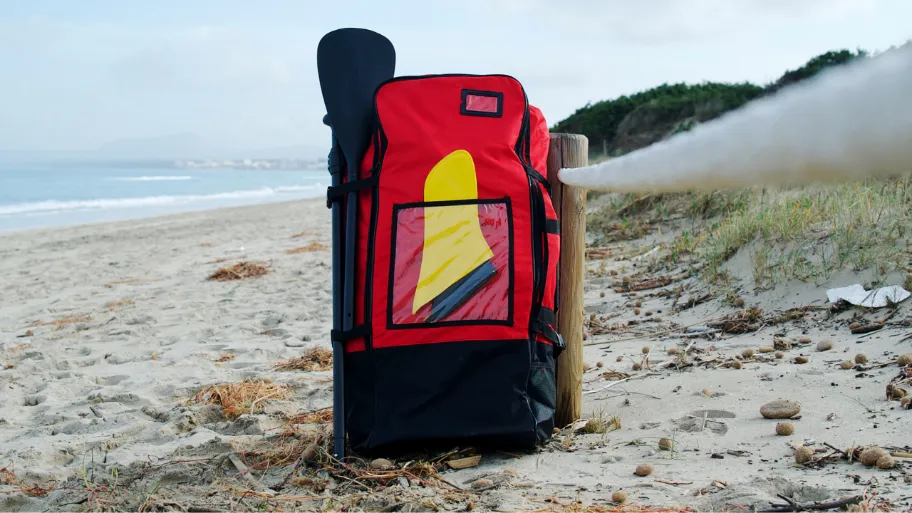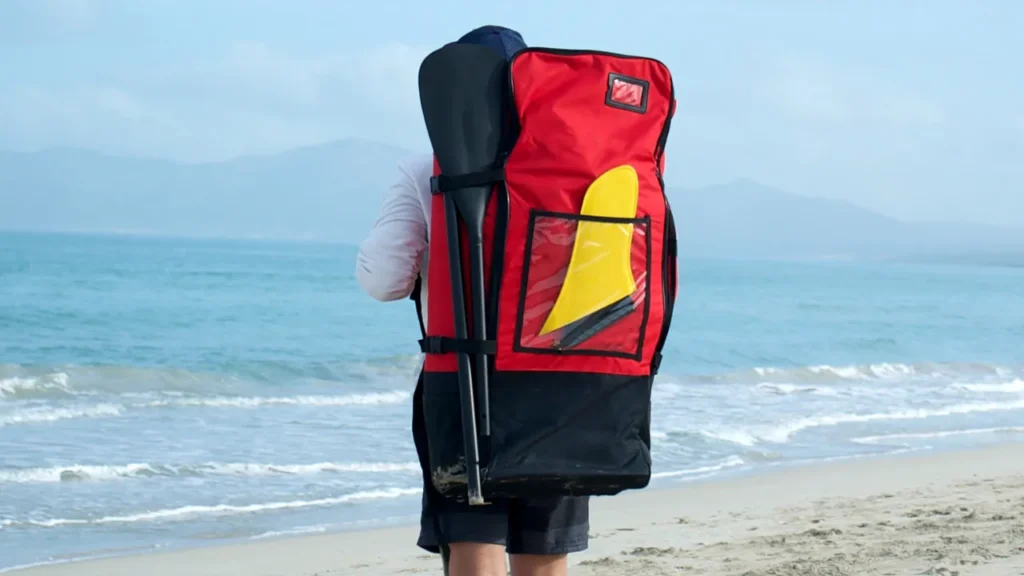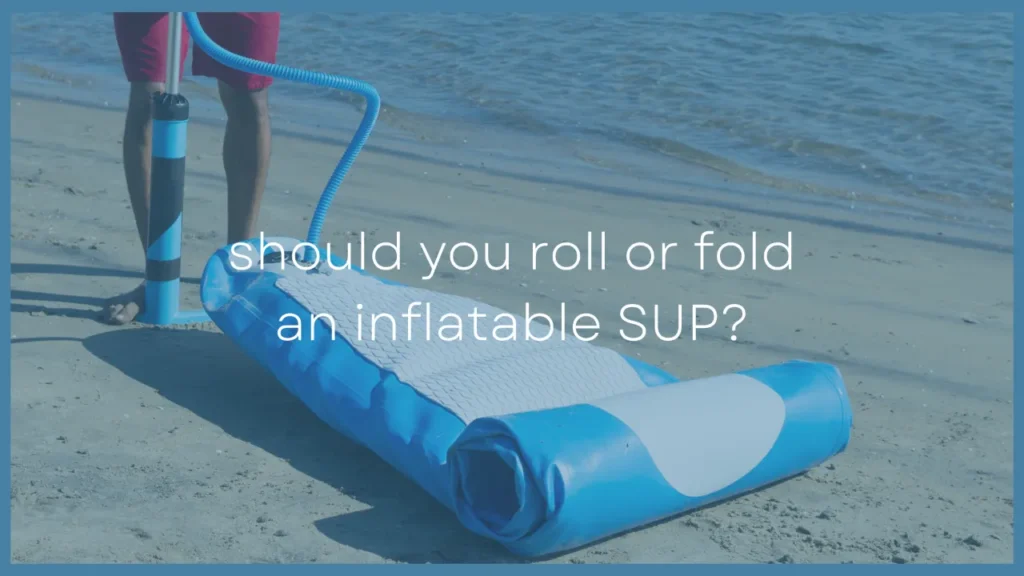One of the advantages of owning an inflatable SUP is that they are portable and pack away small which is great for people in apartments or people like me with small cars.
But after you've finished your day on the water and it's time to store your board is it better to roll or fold your SUP? Both have their advantages and disadvantages but which is best?
Rolling your SUP is usually advised over folding as it minimizes repetitive crease damage. Loosely roll your board starting at the nose and make sure you don't put pressure on the fin box as this is one of the most common causes of board damage.
To avoid damage to the fin box fold in the last 3 feet/1 meter of the board containing the fin box in on itself then roll your board on top of the fin box ensuring it stays nice and flat.
So people do prefer to fold their board over rolling as this can be more straightforward and can allow you to fit the board in the bag slightly easier. Stand up paddle boards are made from a very thick and durable plastic so folding your board is unlikely to cause any issues, it just increases the chances of repetitive folding stresses over the years.
Rolling Your Inflatable SUP

Rolling your inflatable SUP is one of the simplest and best ways to store your board since it avoids putting fold stresses on the board and deflates while you roll.
You want to make sure you loosely roll your board starting at the nose and working your way to the tail. Place your pump inside the board so you have something firm to roll the board around.
Don't roll the board too tight as this can cause stress to the seams which could damage it over time.
Starting at the nose both ensures that minimal stress is put on the fin box, which is one of the most fragile parts of the board) but it also means you are rolling towards the air valve which can allow you to push out the air as you roll the board.
Some boards come with pumps that are able to draw air out of the board making it completely deflated. It's always a good idea to do this first if you have the pump available as this will make sure your board folds down as small as possible and fits into the bag.
Remember to avoid rolling your board too tightly, this stresses the seams around the fix box, especially if you have a US fin box.
Loosely rolled is best. If the bag is a really tight fit, you may want to consider storing it looser than what the bag allows and keep it rolled with a bit of rope.
You want to avoid any repeated fold/crease points as much as possible.
mcarneybsa – Reddit /r/sup
At the end of your roll you DON'T want to be forcing your fin box around a roll as this puts strain on the ends of the fin box which can lead to damages in the plastic or the fin box itself.
As shown in the video above it's a good idea to fold to back 3 feet/1 meter of your board (that contains the fin box) back in on itself and then roll your board on top of the fin box, ensuring it stays flat.
This has the added benefit of having a very flat section of your rolled up board and when you put that flat section against you back it makes it a lot more comfortable to carry your board.
Folding Your Inflatable SUP

Folding instead of rolling your SUP is the less common way of storing your board but still perfectly fine for most casual users.
This method can be more convenient and can sometimes save space over a loose roll. It can also have the added benefit of naturally putting less stress on the fin box as it'll end up over a flat section of the fold (if you fold it properly).
You generally fold the board starting at the fin box at the back of the board.
Fold the first 3 feet/1 meter of the board over – or up until the edge of the fin box. Tuck the extra bit of plastic at the rear of the board under the fin box.
Then continue to fold the board until you reach the nose. There is a great demonstration of how to do it in this video:
The benefit of doing the folding method is you start with your fin box so you don't have to hope that the roll situates your fin box properly at the end.
The downside of folding is that it can potentially increase repetitive fold creases overtime and this could lead to the seams in these areas getting damaged. Other downsides are the fact you can't fit your pump on the inside of your board and also having the fin box on the inside can indent your board from the pressure placed against the adjacent plastic.
For the casual user who uses their board a few times a year this isn't going to be an issue. If this is you then fold to your hearts content and your board will likely be fine.
But if you're going out every weekend then the folding stresses over the same area can build up over time.
Does Rolling or Folding An Inflatable SUP Damage It?

Paddle boards are made from very thick and durable plastic and they are designed to be rolled away for extended periods when not in use. Storing your SUP for long periods of time rolled will not damage it.
These boards are very durable unless you buy a cheap SUP.
Rolling your SUP too tight and storing it for a long time could cause potential damage to the seams and fin box.
You should ensure you lightly roll your board starting at nose going to tail to avoid damage. This makes sure your fin box will end up on top.
When rolling or folding your SUP, always remove the fins first to avoid damage
You can then roll your fins inside your SUP or put them in your bag for storage to avoid losing them and having to paddle without a fin.




